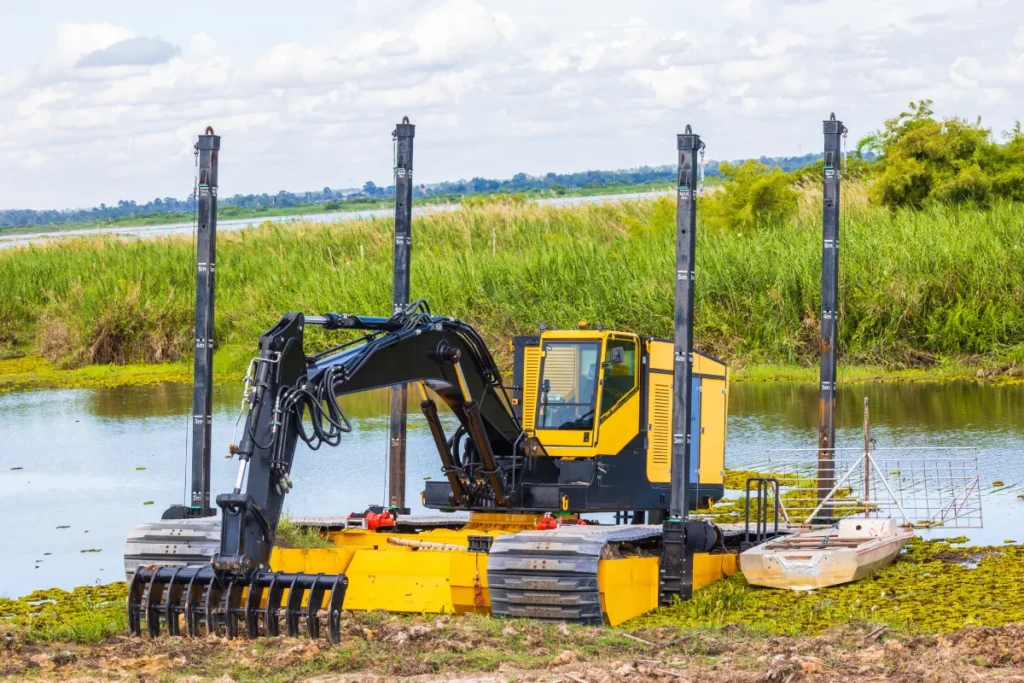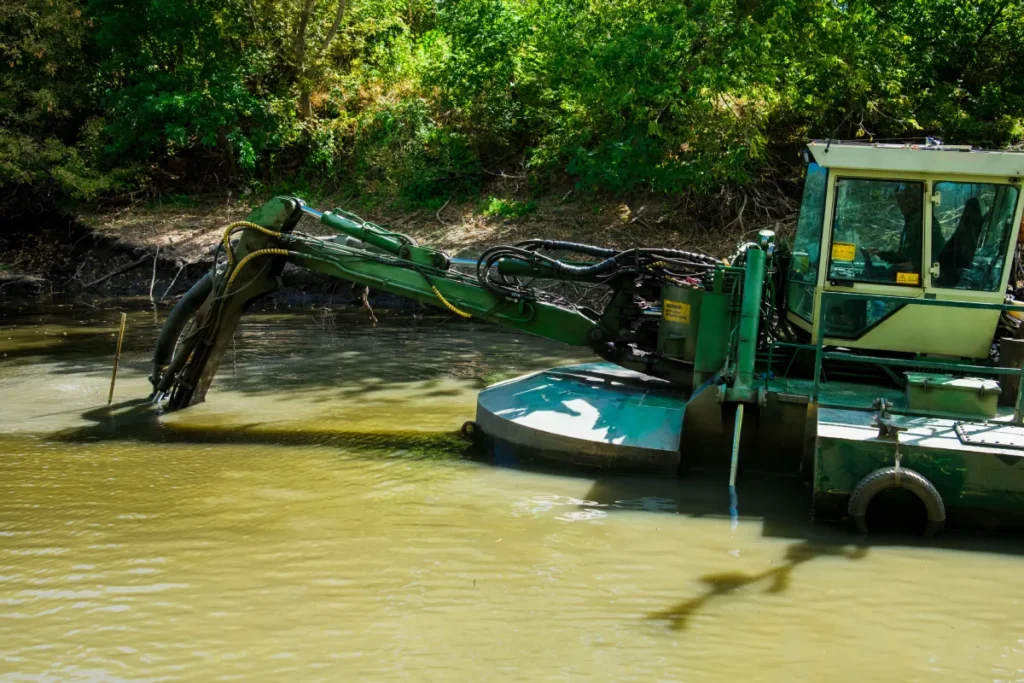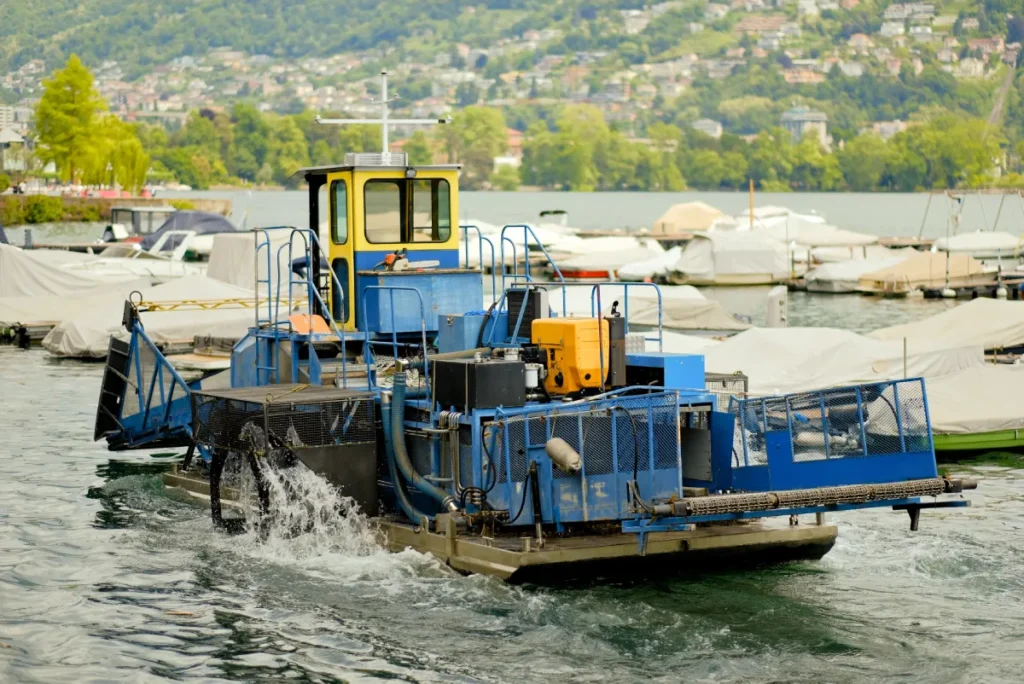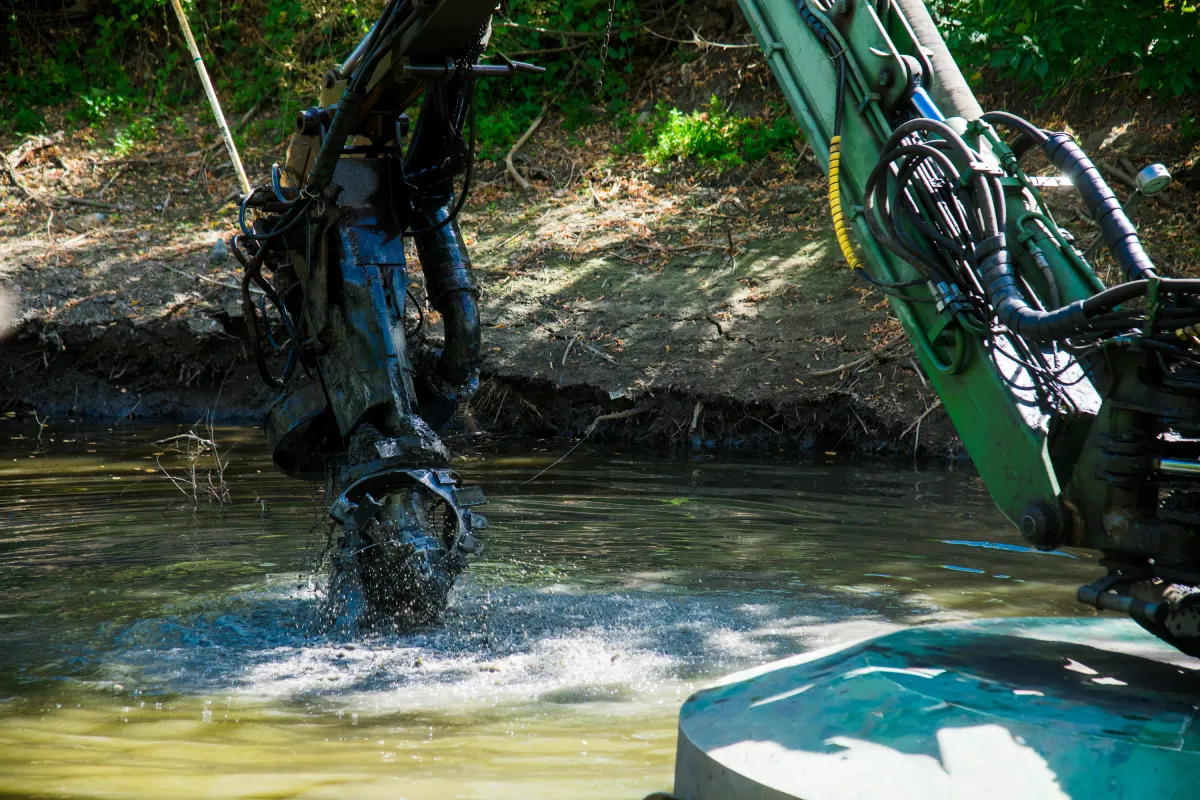The evolution of small dredging equipment is reshaping how industries approach sediment removal, waterway maintenance, and resource recovery. From mining operations and oil & gas facilities to municipal works and military or naval infrastructure, decision-makers are increasingly looking for equipment that delivers both efficiency and long-term value. Unlike large-scale dredging systems, compact units provide the flexibility to tackle projects in environments that require precision, minimal disruption, and lower operational overhead.
Several factors are driving this transformation. Procurement teams and engineering managers now prioritize solutions that enhance operational efficiency, align with sustainability mandates, and meet strict regulatory compliance requirements—all while delivering a measurable return on investment. This shift is particularly evident in specialized areas where tailored technologies are needed. For instance, gold dredging equipment plays a vital role in resource recovery projects, while small pond dredging ensures effective maintenance of confined water bodies in municipal and agricultural settings. Together, these advancements underscore the growing importance of versatile and high-performing systems in today’s dredging landscape.
The Shifting Landscape of Small-Scale Dredging
Demand for small dredging equipment is rapidly increasing as industries adapt to the need for more precise and sustainable operations. Compact dredgers are uniquely positioned to operate in confined or sensitive environments such as ponds, lagoons, and urban waterways, where traditional large dredgers are impractical. Their smaller footprint allows project contractors and municipal buyers to conduct sediment removal with less disruption to surrounding ecosystems and infrastructure.
Modern market expectations are setting a new standard for performance. End users expect small dredging equipment to deliver reduced downtime, eco-friendly operation, and flexible deployment across multiple project types. Whether it is maintaining stormwater systems, recovering valuable minerals with gold dredging equipment, or managing delicate ecosystems through small pond dredging, today’s solutions are expected to balance high efficiency with environmental responsibility.
From a procurement standpoint, the decision to invest in small dredging equipment goes beyond upfront cost. Buyers increasingly evaluate lifecycle value, weighing fuel consumption, maintenance requirements, and adaptability to future projects. Equipment that can be redeployed for varied applications—from municipal sediment removal to gold dredging equipment in mining or small pond dredging for agricultural use—offers long-term savings and improved ROI. This flexibility ensures that organizations can maximize the benefits of their dredging investment while meeting operational and regulatory demands.
Automation and AI in Small Dredging Equipment
The integration of automation and AI is transforming the performance of small dredging equipment. Artificial intelligence and machine learning allow operators to optimize dredging routes in real time, adjust energy use to match sediment conditions, and anticipate mechanical issues before they result in costly downtime. This predictive maintenance capability is especially valuable for industries where project schedules are tight and equipment reliability directly impacts ROI.
Remote operation systems have further advanced the role of small dredging equipment in modern projects. By enabling control from secure onshore or offshore locations, these systems reduce labor requirements, improve safety, and extend operating windows under challenging site conditions. For applications such as gold dredging equipment, where operations may take place in hazardous or inaccessible areas, remote technology ensures continuous productivity with lower risk.
Data integration with cloud platforms is also becoming standard in small dredging equipment. Real-time monitoring and analytics give project managers greater visibility into equipment performance, sediment removal rates, and compliance with environmental standards. This level of transparency allows better decision-making and streamlined reporting. Whether applied to resource recovery with gold dredging equipment or to sensitive applications like small pond dredging, automation ensures that equipment remains efficient, adaptive, and compliant with the latest operational requirements.
Modular and Adaptable Dredge Systems

Another key trend shaping the future of small dredging equipment is the move toward modular and adaptable systems. Modular design allows project managers to configure equipment for highly specific needs, whether dredging a shallow canal, clearing sediment from a confined urban waterway, or deploying portable systems for small pond dredging. This customization ensures the most efficient use of capital while reducing unnecessary operating costs.
The reusability of base components is a major advantage for organizations looking to maximize ROI. Instead of investing in multiple dredges for different projects, buyers can adapt a single system for varied tasks—from sediment removal in municipal lagoons to resource recovery with gold dredging equipment. This flexibility makes small dredging equipment a practical choice for industries that require reliable, multi-project capability without excessive capital expenditure.
For real-world use cases, portable and modular units are proving invaluable. In agriculture, small pond dredging helps restore water storage capacity while preserving the surrounding land. In mining, compact systems equipped as gold dredging equipment recover valuable resources efficiently, even in remote or rugged locations. By combining modularity with adaptability, small dredging equipment ensures that procurement decisions align with both immediate project needs and long-term operational goals.
Sustainable Energy and Green Propulsion
The shift toward cleaner energy sources is redefining the performance standards of small dredging equipment. Traditionally powered by diesel-only engines, today’s systems are increasingly adopting hybrid, electric, and even solar-assisted propulsion to reduce both environmental impact and operating costs. This change is particularly important for industries where regulatory compliance on emissions is becoming stricter and sustainability targets are integrated into procurement strategies.
For municipal projects and small pond dredging, electric and hybrid systems provide quieter operation and reduced emissions, ensuring minimal disturbance to surrounding communities and ecosystems. At the same time, hybrid propulsion allows contractors to extend operating hours while maintaining cost-efficiency. The incorporation of solar-assisted technology into portable dredges demonstrates how small dredging equipment can remain effective in remote or off-grid environments where access to traditional fuel sources is limited.
The benefits extend beyond environmental considerations. Lower fuel consumption, reduced maintenance requirements, and improved reliability all contribute to a stronger return on investment. In mining operations that rely on gold dredging equipment, for instance, hybrid propulsion not only minimizes operating costs but also improves sustainability performance, aligning with broader corporate and regulatory objectives. As procurement leaders evaluate future needs, energy-efficient and eco-friendly propulsion systems are becoming a defining factor in the selection of small dredging equipment.

Advanced Materials and Durability Enhancements
Another major innovation shaping small dredging equipment is the use of advanced materials that extend durability and reduce lifecycle costs. Traditional steel construction is now being supplemented with high-strength alloys, composites, and ceramic coatings, all designed to withstand the demanding conditions of abrasive sediment removal. For projects involving gold dredging equipment, where abrasive sands and mineral-rich materials place significant stress on pumps and pipelines, these materials play a critical role in extending operational life and reducing downtime.
The durability of small dredging equipment directly impacts its cost-effectiveness. Components engineered with wear-resistant coatings and composite reinforcements last longer, require fewer replacements, and reduce maintenance interruptions. This translates into greater uptime and consistent performance, especially valuable in industries where project delays can carry substantial financial consequences.
Applications such as small pond dredging particularly benefit from these innovations. Equipment used in confined environments often operates at lower flow rates but must handle dense, compact sediment that can accelerate wear. By incorporating advanced materials, manufacturers ensure that small dredging equipment remains reliable under varying conditions. This combination of resilience and efficiency gives procurement teams confidence that their investment will deliver long-term value, whether deployed for municipal maintenance, mining, or specialized gold dredging equipment operations.
Integration with Surveying and Mapping Technologies
The effectiveness of small dredging equipment is increasingly linked to its integration with advanced surveying and mapping tools. GIS mapping and hydrographic surveying provide precise insights into sediment distribution, water depth, and environmental conditions before and during dredging operations. When paired with automation, these technologies enable operators to maximize accuracy while minimizing unnecessary material removal.
For municipal projects and small pond dredging, the ability to map shallow or confined areas with high precision ensures that only targeted zones are addressed, preserving ecological balance and improving cost efficiency. Similarly, in resource recovery operations, integrating GIS with gold dredging equipment enhances accuracy in identifying high-value sediment layers, reducing wasted effort and improving overall yield.
Compliance is another critical benefit of these integrations. Real-time data collection and documentation help project managers ensure adherence to environmental regulations while providing transparent reporting to stakeholders. As industries adopt more sophisticated data-driven approaches, the combination of surveying tools and small dredging equipment will become a standard for improving both efficiency and accountability.
Real-World Applications and Industry Use Cases

The versatility of small dredging equipment is best demonstrated through its wide range of applications across sectors. Municipal authorities rely on compact dredges for sediment removal in small lakes, stormwater ponds, and canals where large equipment is impractical. In these cases, small pond dredging ensures water quality and storage capacity are maintained without disrupting nearby infrastructure.
In the mining sector, small dredging equipment supports fine recovery and tailings management. Specialized systems, including gold dredging equipment, allow operators to extract valuable minerals with precision, even in remote or harsh environments. These compact solutions are cost-effective alternatives to larger dredging systems while still delivering strong performance in abrasive conditions.
Oil and gas facilities also benefit from the deployment of small dredging equipment in confined coastal sites or facility ponds where sediment buildup can disrupt operations. Meanwhile, military and naval organizations employ portable dredgers for harbor and base maintenance, ensuring navigational safety and operational readiness. From small pond dredging in municipal environments to the use of gold dredging equipment in resource-intensive mining projects, these applications underscore the adaptability and efficiency of compact dredging technologies across industries.
ROI and Procurement Considerations
Investing in advanced small dredging equipment is not only about meeting immediate project requirements but also about reducing long-term lifecycle costs. Modern systems are designed to optimize fuel efficiency, minimize downtime through predictive maintenance, and require fewer operators, all of which translate into measurable savings. For decision-makers managing budgets, these efficiencies can significantly improve return on investment across multiple projects.
Balancing upfront capital costs against operational savings is a key consideration for procurement heads and project contractors. Equipment that may appear more expensive initially often delivers greater value over time through reduced manpower requirements, extended component life, and higher efficiency. This balance is especially critical in industries such as mining, where gold dredging equipment must withstand abrasive materials, and municipal environments, where small pond dredging demands reliable, low-maintenance solutions.
Several factors influence the selection of the right system. Project scope determines whether portable or higher-capacity equipment is needed, while sediment type influences the choice between hydraulic or mechanical dredging. Site accessibility is another major factor—remote or shallow environments often require lightweight and modular units. Finally, compliance with environmental regulations is non-negotiable, making energy-efficient, eco-friendly technologies a strategic advantage when selecting small dredging equipment.
The Road Ahead: Future-Proofing Dredging Investments
As industries evolve, the technologies defining small dredging equipment are expected to focus even more on adaptability, sustainability, and automation. Trends such as hybrid propulsion, AI-driven predictive systems, and GIS-integrated surveying are not temporary advancements—they are setting the standard for how dredging operations will be managed over the next decade. Decision-makers who plan investments today must ensure that the systems they procure are not only effective for current needs but also capable of adapting to future requirements.
For municipalities, the ability to deploy reliable small pond dredging solutions will remain essential to maintaining water quality and stormwater management. In the mining sector, continued reliance on gold dredging equipment will demand even greater durability and efficiency to balance cost with resource recovery. Across all industries, the expectation is clear: equipment must deliver performance while aligning with stricter sustainability and compliance standards.
Organizations that prioritize adaptable, automation-ready, and energy-efficient systems will position themselves ahead of regulatory and market shifts. By aligning procurement strategies with these emerging trends, businesses ensure that investments in small dredging equipment continue to generate value, reduce risks, and support long-term operational goals.



